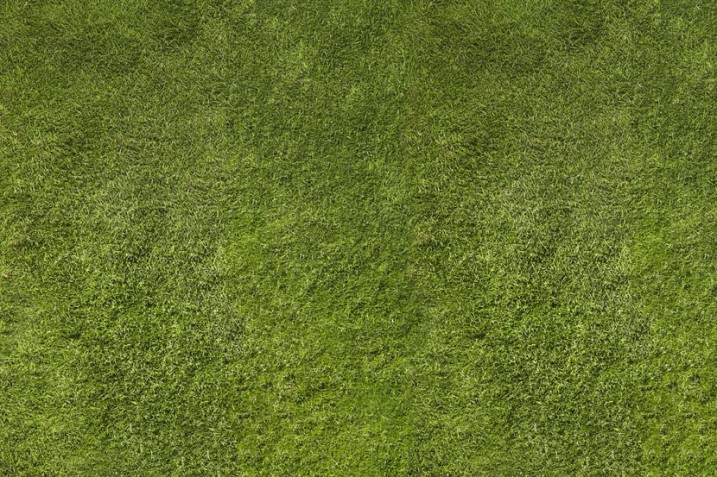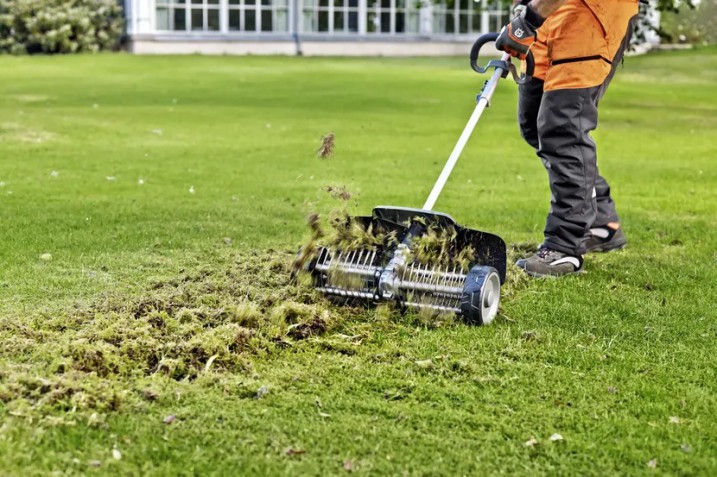When it comes to healthy and beautiful looking gardens, your lawn can really make or break it. There's nothing quite as frustrating as a patchy or bare lawn, especially when the rest of the yard is in perfect condition.
Whether you are a greenspace professional working on large lawns, or a homeowner looking for a simple fix, repairing a patchy or thin lawn isn't difficult if you know a few of the tricks.
Luckily, a few simple lawn repair and renovation steps will have your lawn looking thick, lush and healthy in no time. Here's how to fix a patchy lawn so you can spend more time enjoying the garden instead of going to battle with it.
Causes of a Thin and Patchy Lawn
There are many reasons why a lawn begins to thin out and become patchy and bare. The main culprits include weed growth, thatch, poor air and water delivery to the roots, inconsistent mowing and moss or fungal growth.
Other causes include overuse of pesticides and artificial fertiliser, too much or too little water, extreme weather conditions, standing objects or furniture directly on the grass, animals digging at the ground and insect infestations.
For most patchy lawns, a combination of not mowing regularly enough, under fertilising and weed growth is to blame, so it makes sense to first target these things before moving to the more drastic options.

How To Fix a Patchy Lawn
Nurturing a thin and patchy lawn back to life isn't as difficult as most people think. By performing the following tips and tricks on your grass, it'll be thick and healthy in a matter of weeks.
1 - Dethatch and Aerate
A natural part of a lawn's growth cycle includes the death of older blades. As these blades of grass die, they collapse to the ground. Depending on their size and type, these blades can take a long time to break down and decompose - resulting in a dense, fibrous and compact layer on the surface.
In turn, this prevents sunlight, air and water from reaching any emerging blades of grass, resulting in patchy areas. Dethatching is one of the best ways to help treat patchy areas on a lawn, while aerating ensures maximum airflow, nutrition and drainage are achieved.

2 - Eliminate Weeds
Weeds actively compete with grass for space and nutrients, slowly killing off lawns and replacing new growth with new weeds. Regular mowing can help prevent weeds from taking root, preventing them from going to seed and spreading further.
For weeds that spread by root, manual removal or applying weed killer can help eliminate any further growth. A sprayer that uses a wettable weed killing powder will give you maximum precision when targeting stubborn weeds, minimising the amount of coverage needed.
3 - Top Soil and Grass Seeds
For lawns that need to be re-seeded, it's a good idea to apply a thin layer of topsoil to the entire lawn before getting started. This helps to condition the ground, improving nutrient availability for the seeds and helps fill in any dips or divots for a more even surface.
Once you have sown your grass seeds, wait until it has reached around 3 ½ inches before giving it its first cut. This allows the roots to become firmly established and minimises the risk of shock. The great thing about seeding a patchy lawn is that you only need to use enough seeds for the thinned areas, so don't think this has to be expensive.
4 - Feed, Fertilise and Water
Regular fertilising and watering will go a long way in helping thin lawns to thicken up. However, it's all about finding that perfect balance of feeding and watering. Too much water, and you'll end up washing nutrients away from the roots, causing your lawn to yellow. Too little and any applied feed can cause root burn, leading to a browning of the lawn.
5 - Mow Regularly
Regular mowing is vital if you want to eliminate patches from your lawn. One of the leading causes of lawn thinning is grass that is allowed to grow too tall before it is cut. Mature grass stems are thicker and more fibrous than younger ones, requiring more space to grow. As they prepare to go to seed, nutrients and energy are diverted from the roots to the seed heads, resulting in sparse new growth at ground level.
Regular mowing ensures that grass is kept at an optimal level for thick and healthy growth. It also prevents weeds from becoming established and delivers vital nutrients back to the ground. Using Automower® robotic lawn mower is a fantastic way to ensure the grass is kept clipped nice and short, resulting in a carpet-like finish that takes care of itself, month after month.
Choosing when to mow your lawn will also go a long way with creating a dense and full finish. Increased mowing during the spring and summer will ensure your lawn is nice and healthy, while a reduced schedule during the colder months will allow it to reach a height that provides protection from cold air and any potential frost.
Breath Life Back into Patchy Lawns
Restoring a thin and patchy lawn back to health is one of the most rewarding things you can do in the garden. Not only does it look more aesthetically pleasing, but it also helps minimise the risk of further patches from appearing. By using a multi-faceted approach to lawn care, you ensure it receives all of the hydration, nutrition, air and sunlight it needs to grow thick and strong.

Having the right tools to hand helps simplify the entire process, encouraging lush, green and healthy growth throughout the year. From automated mowing with Automower® to feeding and spot treatments with a garden sprayer, find all of the tools and accessories you need to support your lawn, whether at home or on the job.















